This sheet is about exposure to azelastine in pregnancy and while breastfeeding. This information should not take the place of medical care and advice from your healthcare provider.
What is azelastine?
Azelastine is an antihistamine. It is commonly used to treat allergy symptoms. It comes as a nasal spray (intranasal) to treat symptoms such as runny, itchy, and stuffy nose, and sneezing. The nasal spray is sold under the brand name Astelin®. Azelastine also comes in eye drop form to treat itchy eyes due to allergies. The eye drops are sold under the brand name Optivar®.
Sometimes when women find out they are pregnant, they think about changing how they take their medication, or stopping their medication altogether. However, it is important to talk with your healthcare providers before making any changes to how you take this medication. Your healthcare providers can talk with you about the benefits of treating your condition and the risks of untreated illness during pregnancy.
I take azelastine. Can it make it harder for me to get pregnant?
Studies have not been done in humans to see if azelastine can make it harder to get pregnant. Animal studies have shown no impact on female fertility in rats when azelastine was used by mouth (orally) at levels up to 150 times the maximum recommended human daily intranasal (by nose) dose in adults.
Does taking azelastine increase the chance of miscarriage?
Miscarriage is common and can occur in any pregnancy for many different reasons. Studies have not been done to see if azelastine increases the chance of miscarriage.
Does taking azelastine increase the chance of birth defects?
Birth defects can happen in any pregnancy for different reasons. Out of all babies born each year, about 3 out of 100 (3%) will have a birth defect. We look at published data to try to understand if an exposure, like azelastine, might increase the chance of birth defects in a pregnancy.
Studies have not been done in humans to see if azelastine could increase the chance of having a pregnancy with a birth defect. Animal studies that used doses of azelastine similar to doses used in humans have not shown an increased chance of birth defects.
Does taking azelastine in pregnancy increase the chance of other pregnancy-related problems?
Studies have not been done to see if azelastine increases the chance of pregnancy-related problems such as preterm delivery (birth before week 37) or low birth weight (weighing less than 5 pounds, 8 ounces [2500 grams] at birth).
Does taking azelastine in pregnancy affect future behavior or learning for the child?
Studies have not been done to see if azelastine can cause behavior or learning issues for the child.
Breastfeeding while taking azelastine:
Azelastine has not been studied for use with breastfeeding.
When used in eye drop form, the amount of the azelastine absorbed would likely be low and is not expected to cause problems in breastfed infants.
When used as directed for a few days, azelastine nasal spray would also not be expected to cause adverse effects in breastfed infants. Because azelastine tastes bitter, the baby may reject breastfeeding. If the nasal spray is used in larger doses or for more than a few days, it may cause drowsiness in the infant. It might also lower milk supply, especially when used with a medication called pseudoephedrine or if started before breastmilk supply is well established. If you suspect the baby has any symptoms (such as drowsiness), contact the child’s healthcare provider. Be sure to talk to your healthcare provider about all of your breastfeeding questions.
If a man takes azelastine, could it affect fertility or increase the chance of birth defects?
Studies have not been done to see if azelastine could affect a man’s fertility (ability to get partner pregnant) or increase the chance of birth defects in a partner. Animal studies have shown no change in male fertility when azelastine was used by mouth (orally) at levels up to 150 times the maximum recommended human daily intranasal dose in adults. In general, exposures that men have are unlikely to increase the risks to a pregnancy. For more information, please see the MotherToBaby fact sheet Paternal Exposures at https://mothertobaby.org/fact-sheets/paternal-exposures-pregnancy/.
Please click here to view references.

